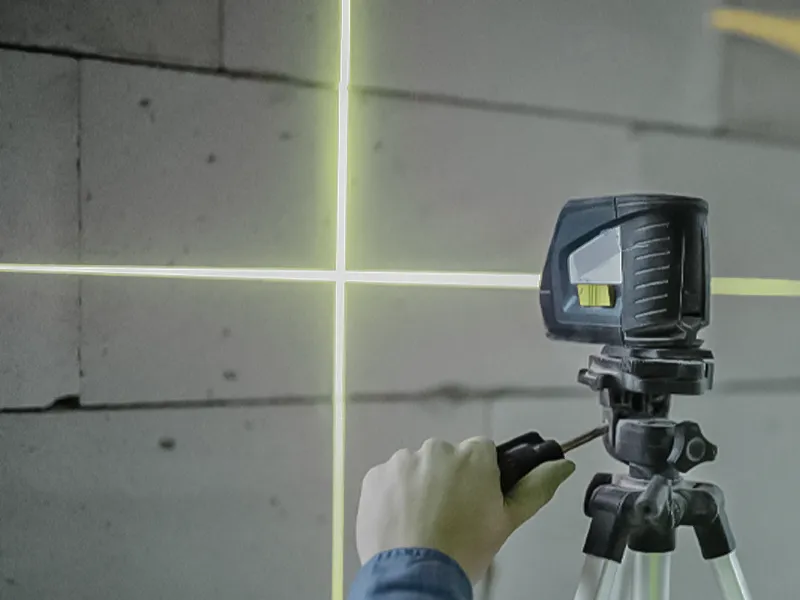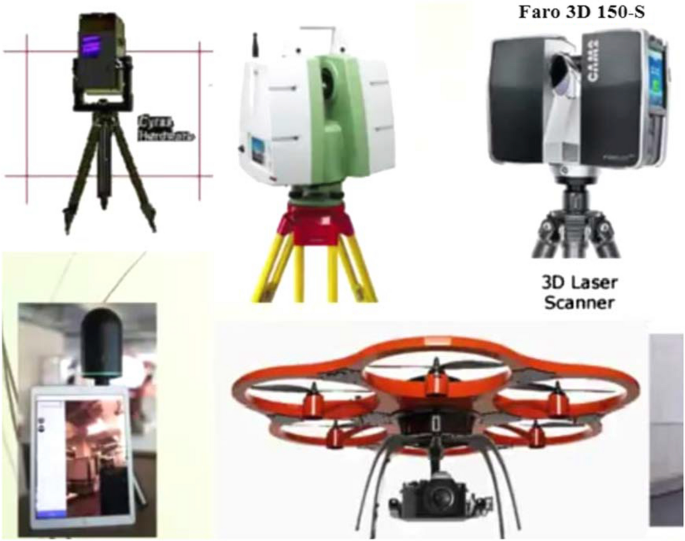Best Practices for Optimizing 3D Scanning in Architecture
Wiki Article
The Future of Precision Dimension: Recognizing the Role of 3D Laser Scanning Technology
The landscape of precision measurement is progressing with the introduction of 3D laser scanning modern technology. This development assures improved accuracy and effectiveness throughout different industries. As markets start to welcome these advancements, the ramifications for task monitoring and implementation come to be progressively substantial. The transformative results of this technology extend beyond mere numbers and dimensions, hinting at a wider change in how experts approach their work. What might this imply for the future?What Is 3D Laser Scanning Technology?
3D laser scanning innovation is an innovative method made use of to capture exact three-dimensional measurements of physical things and environments. This technology uses laser beams to gather information points, which are then refined to develop detailed digital representations of the scanned subjects. By releasing countless laser pulses per second, 3D laser scanners can precisely tape-record the shape, dimension, and spatial connections of different surfaces.The process usually entails positioning the scanner at different perspective to capture extensive data. The resulting point cloud, a collection of countless data factors, can be analyzed and exchanged 3D models. Applications of this modern technology span several fields, consisting of style, heritage, and engineering conservation, where it aids in paperwork and evaluation. As a non-intrusive technique, 3D laser scanning lessens disruption to the setting, enabling complete evaluations of both existing structures and all-natural landscapes, thus enhancing understanding and promoting informed decision-making.
Secret Benefits of 3D Laser Scanning in Different Industries
3D laser scanning innovation uses significant advantages throughout different industries by giving improved accuracy and precision in dimensions. This technology not only streamlines process yet likewise leads to substantial time and expense savings. As organizations increasingly adopt this innovative strategy, the benefits end up being noticeable in improved job outcomes and effectiveness.Enhanced Accuracy and Precision
The assimilation of laser scanning modern technology has transformed the method industries come close to dimension and information collection. This technology offers an extraordinary level of precision, catching numerous data factors in a single check. Consequently, experts throughout numerous areas, such as engineering, production, and design, can produce highly detailed 3D designs that reflect real-world problems. Enhanced precision decreases mistakes associated with traditional dimension methods, making certain that buildings and layouts are based on accurate information. In addition, the capability to capture elaborate information enables better evaluation and decision-making, ultimately leading to enhanced results. By leveraging 3D laser scanning, industries can attain greater standards of high quality, making it a vital device for precise dimensions.Time and Expense Performance
Efficiency in time and price is a significant advantage offered by laser scanning modern technology, changing job execution across various sectors. By rapidly catching comprehensive 3D information, laser scanning decreases the time invested on hands-on dimensions and reduces the threat of errors. This quick information procurement promotes quicker decision-making and project timelines, enabling groups to designate sources better. In addition, the technology lowers the demand for rework, as precise designs lead to better planning and execution. Industries such as building and construction, design, and making advantage considerably, seeing lower expenses connected to labor and products. In general, 3D laser scanning not just enhances functional performance yet also adds to significant cost savings, making it a very useful device in today's competitive landscape.Applications of 3D Laser Scanning in Architecture and Building
As building and construction tasks grow progressively complex, the fostering of laser scanning innovation has actually become a transformative solution. This innovation offers exact measurements and detailed 3D representations of existing structures, facilitating even more accurate planning and style procedures. Designers make use of 3D laser scanning to produce electronic designs that capture elaborate information, ensuring that restorations and brand-new buildings align completely with existing conditions.

The Duty of 3D Laser Scanning in Production Processes
3D laser scanning plays an important role in making procedures by enhancing quality control via precise dimensions and data collection. This modern technology allows manufacturers to recognize disparities early, minimizing mistakes and waste. Additionally, it enhances production process by facilitating better communication and control amongst teams.like it
Improved Top Quality Control
Quality control in making procedures has been changed by the integration of laser scanning technology. This innovative technique permits for specific measurements and comprehensive examinations of parts, making sure that they satisfy rigid quality standards. 3D laser scanning captures detailed geometries and resistances, enabling makers to detect deviations from layout requirements promptly. This technology substantially lowers human error connected with conventional dimension approaches, providing reliable and regular data. By helping with real-time quality control, it makes it possible for proactive modifications in the manufacturing process, eventually bring about enhanced item dependability and client contentment. As sectors progressively adopt 3D laser scanning, the possibility for improved quality control comes to be evident, marking a transformative shift in producing practices.Structured Manufacturing Process
Efficient production process are progressively profiting from the integration of laser scanning innovation in producing procedures. This technology allows for rapid, precise dimensions of assemblies and parts, significantly reducing the time required for arrangement and adjustments. By recording specific geometry, suppliers can quickly determine inconsistencies in between design specifications and actual products, enabling prompt rehabilitative activities. Furthermore, 3D laser scanning promotes the seamless transfer of information in between design and production groups, improving cooperation and reducing errors. The innovation also supports electronic twin production, permitting real-time surveillance and optimization of manufacturing procedures. Therefore, organizations can achieve higher effectiveness, decreased waste, and boosted general productivity, ultimately driving affordable benefit in the market.Maintaining Heritage: How 3D Laser Scanning Aids Cultural Preservation
As social heritage websites face the risk of degeneration and devastation, cutting-edge technologies such as laser scanning arise as crucial devices for conservation initiatives. 3D laser scanning captures detailed details of historical structures and artefacts with amazing precision, creating electronic versions that offer numerous purposes in preservation. These designs permit precise documents of current conditions, allowing experts to keep an eye on modifications over time and evaluate damage dangers.Additionally, laser scanning assists in digital repair, helping conservators develop strategies for repair work or recreating lost components without intrusive techniques. The technology likewise aids in informing the general public, offering immersive experiences via virtual trips that highlight the importance of these sites. By integrating 3D laser scanning into cultural conservation practices, stakeholders can assure that heritage is preserved for future generations while enhancing understanding and gratitude of historical contexts.
top article
The Future Outlook: Improvements and Fads in 3D Laser Scanning Modern Technology
3D laser scanning technology has already changed numerous sectors, its future guarantees even higher advancements that will enhance rate, accuracy, and availability. Arising trends show an increase in combination with synthetic intelligence and device discovering, causing smarter data processing and analysis capabilities. This harmony will certainly enable quicker decision-making and even more precise results in fields such as design, building and construction, and heritage preservation.Additionally, advancements in equipment are expected to yield lighter, more portable scanning tools, democratizing gain access to for smaller sized firms and specific professionals - 3D Scanning. As software program continues to progress, user-friendly applications will certainly streamline complex process, making 3D scanning a lot more accessible to non-experts
The surge of cloud-based services will certainly help with real-time partnership and information sharing among stakeholders, leading the way for structured project administration. Collectively, these patterns signal a future where 3D laser scanning modern technology comes to be an essential tool in an even broader spectrum of applications.
Frequently Asked Questions
Just How Much Does 3D Laser Scanning Innovation Price?

What Are the Abilities Called For to Run 3D Laser Scanners?
Running 3D laser scanners needs technical proficiency, interest to detail, spatial understanding, understanding of software for information processing, and an understanding of evaluating concepts. Additionally, strong analytical abilities and logical skills are vital for reliable operation.Can 3D Laser Scanning Incorporate With Other Technologies?
Yes, 3D laser scanning can incorporate effortlessly with other modern technologies, such as Geographic Information Equipment (GIS), Building Details Modeling (BIM), and boosted fact, improving data precision and helping with improved analysis throughout different sectors and applications. - 3D ScanningWhat Is the Normal Scanning Array of These Tools?
The regular scanning variety of 3D laser scanning gadgets differs commonly, typically in between 50 meters to over 1,000 meters, depending upon the design and application, influencing their viability for different precision measurement jobs and environments.The length of time Does a 3D Laser Scanning Job Take?
A 3D laser scanning task More hints generally takes anywhere from a couple of hours to a number of days, depending upon variables such as project size, intricacy, and called for detail. Each job's timeline can differ substantially based on these components.The landscape of precision dimension is advancing with the development of 3D laser scanning technology. 3D laser scanning technology is an innovative method utilized to catch accurate three-dimensional measurements of physical things and settings. 3D laser scanning innovation offers substantial benefits throughout various markets by supplying improved accuracy and precision in measurements. 3D laser scanning modern technology has actually currently transformed numerous sectors, its future assurances even better developments that will certainly boost accuracy, access, and speed. 3D laser scanning innovation normally sets you back in between $10,000 and $100,000, depending on the tools's capacities and features.
Report this wiki page